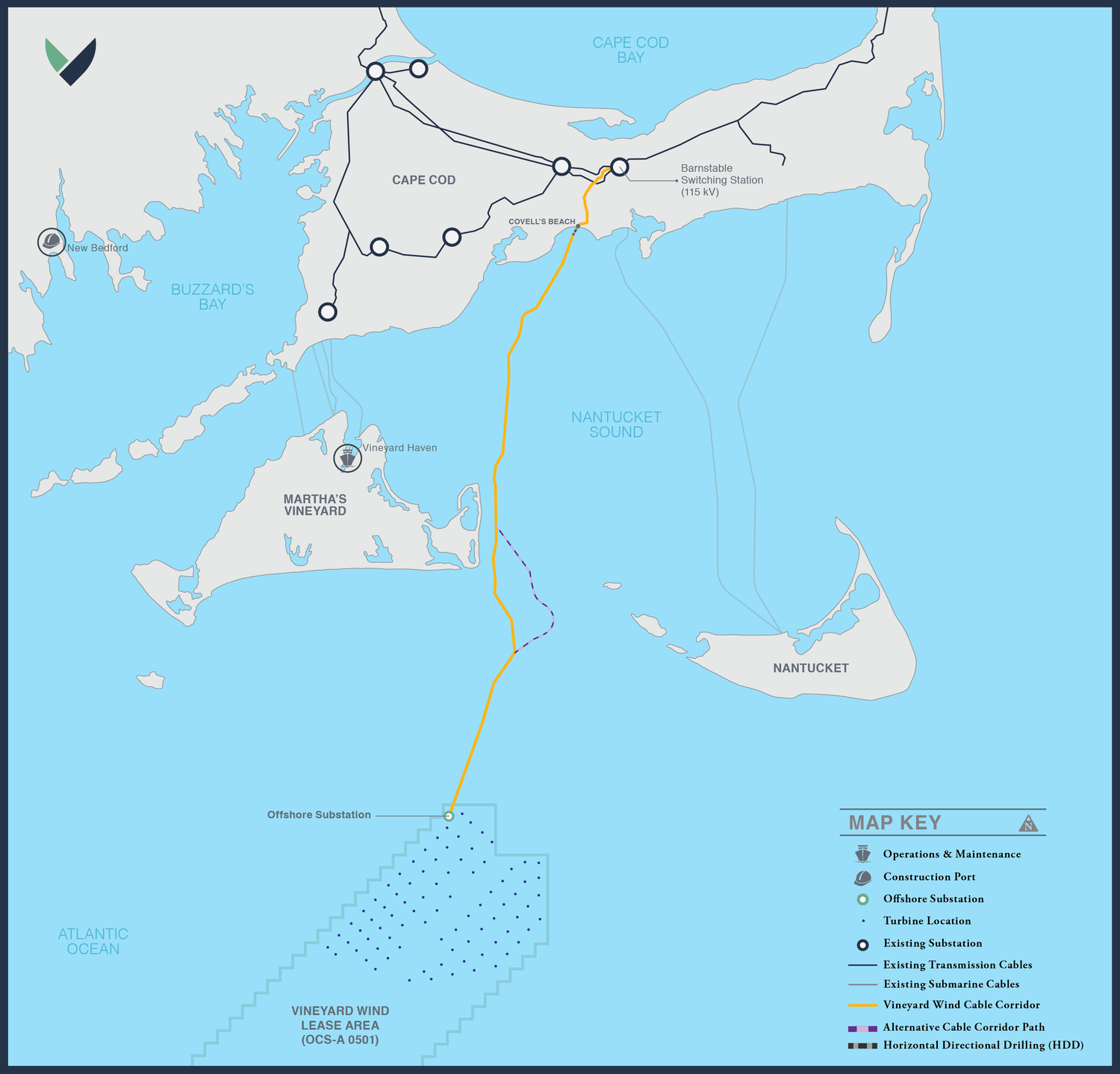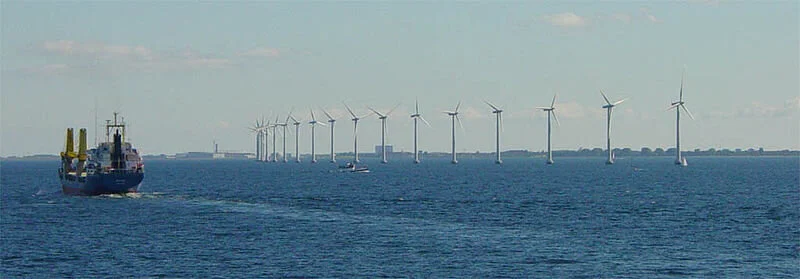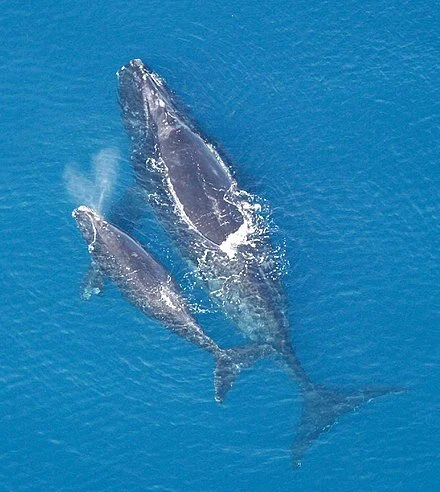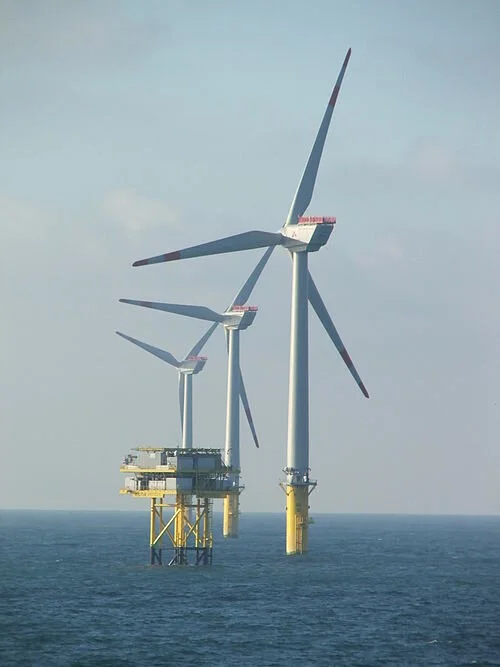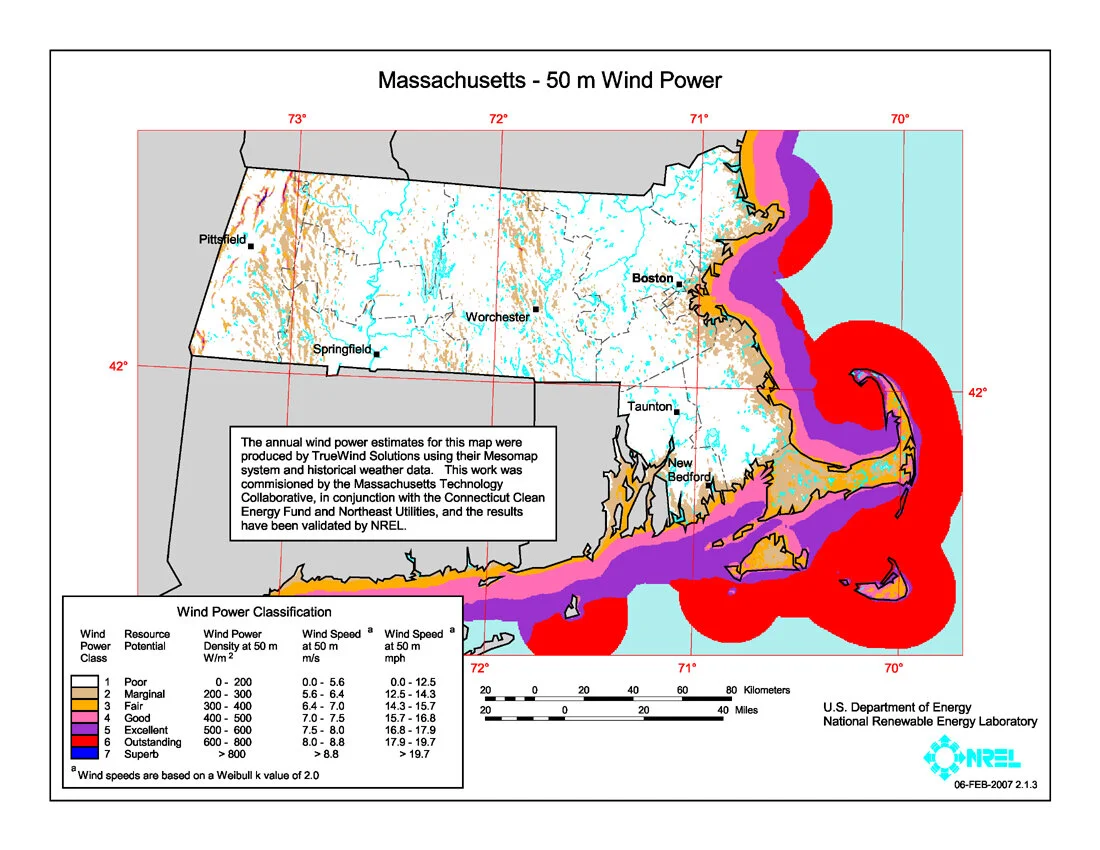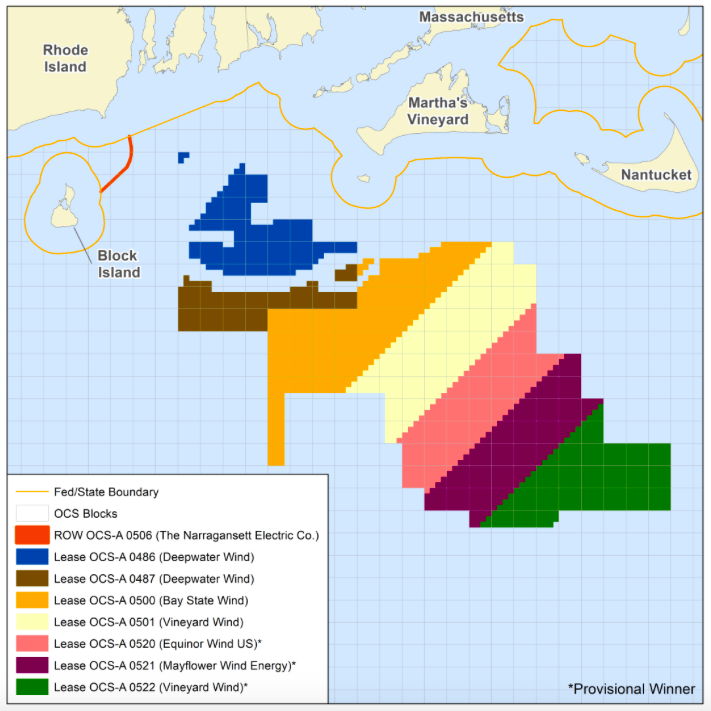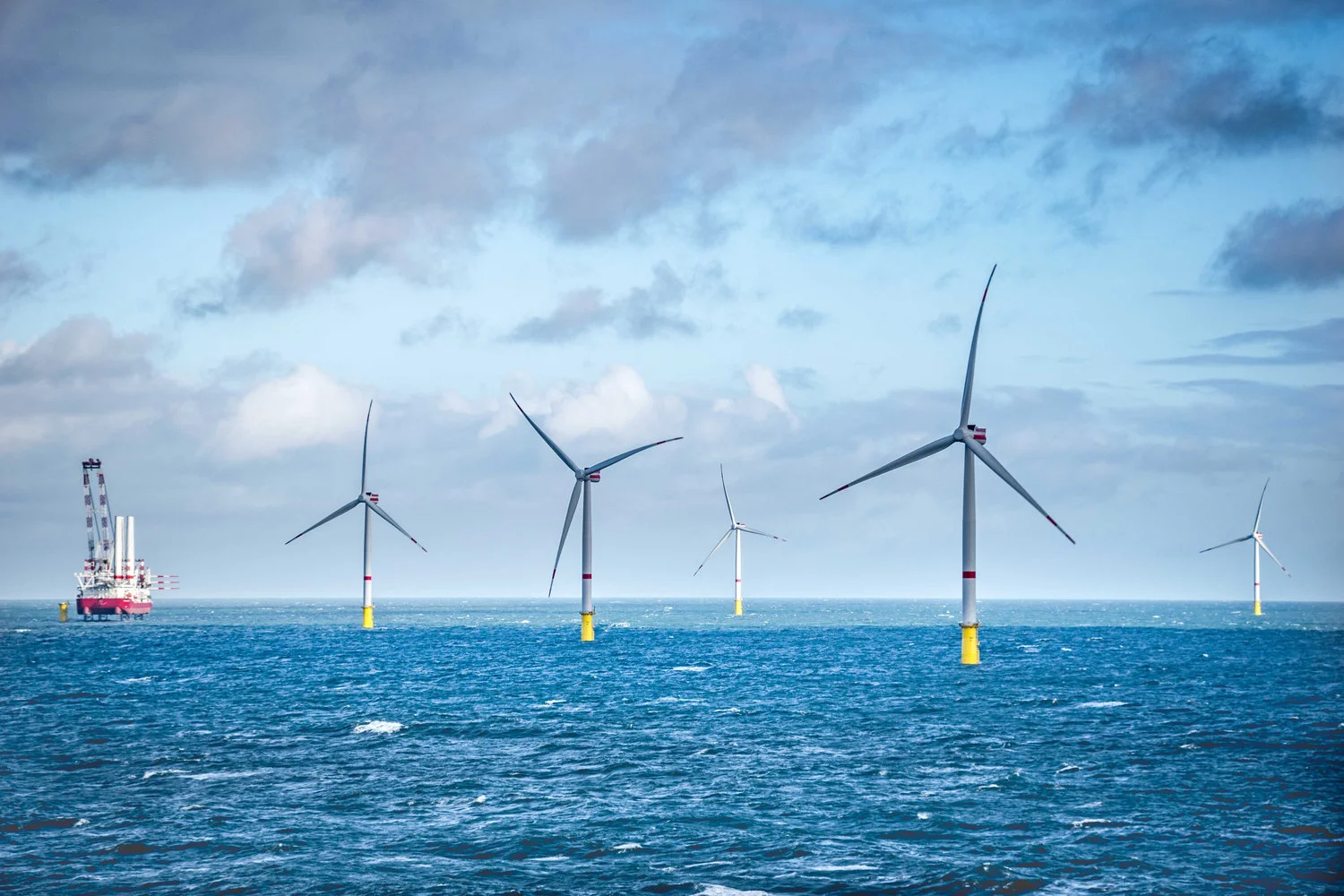From ecoRI News (ecori.org)
The Vineyard Wind project is a major test of the offshore wind industry. The 84-turbine project is hailed as the first large utility-scale power source, after the five-turbine Block Island Wind Farm went on-line in December 2016.
As a pilot project, Block Island showed that the United States can profitably produce and deliver offshore wind energy, and create jobs. More than a dozen other proposals have followed, and new federal wind-lease areas are expected along the East Coast.
Vineyard Wind, with 800 megawatts of electric capacity, is presumed to clear the way for more than 10 gigawatts of power coming from the waters off southern New England.
The $2.8 billion project, backed by the Danish investment fund Copenhagen Infrastructure Partners and Avangrid Renewables of Portland Ore., has received most of the needed permits, including a power-purchase agreement from the Massachusetts Department of Public Utilities.
In Rhode Island, the project went through a bruising review to secure an agreement with commercial fishermen and seafood processors. In February, the state’s Coastal Resources Management Council approved a consistency certification.
The latest impasse, however, may be more difficult than reducing the number of turbines and bargaining over compensation, as Vineyard Wind did with the fishing industry. The delay issued by the Bureau of Ocean Energy Management (BOEM) on Aug. 9 presents a more formidable hurdle.
In its announcement, BOEM said it will take more time to review Vineyard Wind’s environmental impact statement (EIS), in part because of the influx of offshore wind proposals and state mandates for offshore wind energy.
Additional hearings will be held and public comment will be reopened to include input from federal, state, and local agencies, elected officials, and fishing communities. No dates have yet been announced.
BOEM expects to complete the supplemental EIS by the end of this year or in early 2020. Once the EIS is issued, permits can move forward from the Army Corps of Engineers and the Environmental Protection Agency.
Vineyard Wind said it was surprised and disappointed by BOEM’s announcement.
“Even though today’s decision will delay development of American offshore wind projects, Vineyard Wind remains deeply committed to the emerging industry’s success,” according to Vineyard Wind statement.
Vineyard Wind noted that it worked closely with BOEM to have the EIS completed by Aug. 16 and issued by Sept. 6, so that construction can begin by the end of the year. Further delay reduces a key federal investment tax credit the project is relying on.
BOEM has a reputation for rubber-stamping commercial projects. Some elected officials, however, have accuse the agency of thumbing its nose at renewable energy and favoring a fossil-fuel industry that wants to keep New England reliant on natural gas and oil.
BOEM, a division of the Department of Interior, is lead by David Bernhardt, a former lobbyist for the mining and fossil-fuel extraction industry. President Trump, meanwhile, has repeatedly besmirched the wind-energy industry despite its rapid growth and a trend of lower costs.
U.S. Rep. William Keating, a Democrat representing Martha’s Vineyard, said, “the Trump Administration has not dealt fairly with Vineyard Wind.”
“Taking this action, at this late stage, is another example of this Administration’s hostility toward those seeking to combat climate change, as well as its overall rejection of basic environmental values,” Keating is quoted in a statement.
Sen. Edward Markey, D-Mass., said BOEM’s delay “sends a clear and chilling message across this nascent industry that the Trump Administration will do everything in its power to cut corners for oil and gas projects while cutting the chord on the next frontier of clean energy deployment.”
Despite the setback, shareholders still back the project, according to Vineyard Wind.
Vineyard Wind, based in New Bedford, said the project is the lynchpin to the construction of thousands of offshore wind turbines.
“The project is poised to kickstart a new offshore wind industry that promises industrial growth along with new manufacturing and blue-collar employment across the United States from New England to Louisiana to Colorado and beyond,” according to project officials.
The BOEM setback hasn’t deterred Vineyard Wind from proposing up to two additional offshore wind facilities: a 400-megawatt proposal and an 800-megawatt project called Vineyard Wind 2, south of the first Vineyard Wind proposal and in the same federal wind-lease area located 15 miles south of Martha’s Vineyard.
The first Vineyard Wind is also appealing a decision by the Edgartown Conservation Commission to deny a permit to run power cables through the Muskeget Channel. The commission rejected the proposal in July for lacking a decommissioning plan, an absence of environmental research, and concern about the impact of future wind projects.
The Vineyard Wind project and perhaps the future of the offshore wind industry could face another potential obstacle: radar interference. An Aug. 21 story by the MV Times reported that offshore turbines potentially distort marine radar, thereby impairing boat navigation.
The Coast Guard raised the issue in a letter to BOEM in March and suggested that Vineyard Wind research the radar problem and pay for any remedies. The Coast Guard recently joined a federal task force that has been reviewing the issue since 2014. Earlier federal reports showed that wind turbines can interfere with military radar and weather instruments. Various technologies that reduce the problem are being researched.
Vineyard Wind said it answered the radar issue in the EIS and intends to work with the Coast Guard to address any problems. Vineyard Wind said it also will consider “mitigation measures” to compensate fishermen and other stakeholders if needed.
The target completion date for Vineyard Wind is 2022. If built, it will generate enough electricity to power 400,000 homes. According to the Department of Energy the offshore wind industry is expected to create 600,000 jobs by 2050.
Tim Faulkner is an ecoRI News journalist.






